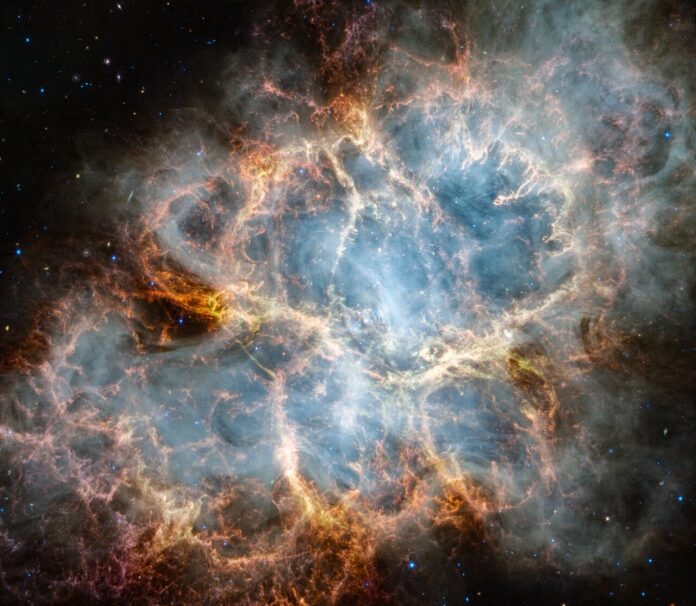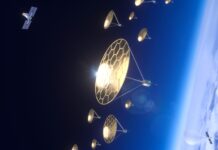Although the Crab Nebula is one of the best-studied supernova remnants, questions about its progenitor, the nature of the explosion that created it, still remain unanswered. The James Webb Space Telescope is looking for any clues left in the supernova remnant. Webb’s infrared sensitivity and spatial resolution are giving astronomers a more complete picture of the scene, which is still expanding.
Webb is closely observing the Crab Nebula, a supernova remnant located 6,500 light-years away in the constellation Taurus. Ever since this energetic event was recorded in 1054 AD by 11th century astronomers, the Crab Nebula has continued to attract attention and further study as scientists seek to understand the conditions, behavior, and effects of supernovae through careful examination of this relatively close example.

Using Webb’s NIRCam (Near Infrared Camera) and MIRI (Mid-Infrared Instrument) cameras, the game continues as new details are revealed – including the first complete map of dust distribution – in the quest to answer questions about the origin of the Crab Nebula.
At first glance, the overall shape of the nebula resembles the 2005 image in the optical wavelength range taken by the Hubble Space Telescope. In Webb’s infrared observations, a clear, cage-like structure of fluffy gas filaments is shown in red and orange. However, in the central regions, Webb first mapped the radiation from dust grains (yellow, white, and green).

Additional aspects of the Crab Nebula’s internal structure become more visible and more detailed in the infrared light captured by Webb. In particular, Webb illuminates the so-called synchrotron radiation, which is created by charged particles such as electrons moving along magnetic force lines at relativistic speeds. The radiation appears here as a milky, smoky material that permeates much of the interior of the Crab Nebula.
This feature is associated with the nebula’s pulsar, a rapidly rotating neutron star. The strong magnetic fields of the pulsar accelerate particles to extremely high speeds and cause them to emit as they orbit along the magnetic field lines. While synchrotron radiation is emitted across the electromagnetic spectrum, it becomes particularly bright in the infrared thanks to Webb’s NIRCam instrument.
To find the pulsating heart of the Crab Nebula, follow the streaks that go in a circular pattern, resembling pulsations, to a bright white dot in the center. Thin white ribbons of radiation extend from the nucleus. The curved bands are closely grouped together, outlining the structure of the pulsar’s magnetic fields that sculpt and shape the nebula.
In the center left and right, the white material bends sharply inward from the edges of the filamentary dust cage and heads toward the location of the neutron star, as if the nebula’s waist were shrinking. This sharp weight loss may be caused by the fact that the wind expansion of the supernova is restrained by a belt of dense gas.
The wind generated by the heart of the pulsar continues to push the envelope of gas and dust outward at a rapid pace. Note that the filaments tend to be longer in the upper right part of the nebula, in the same direction as a pulsar that is not confined by a gas belt. In the interior of the remnant, the yellow, white, and green mottled filaments form large-scale loop-like structures that represent areas where dust grains are located.
The search for answers to questions about the Crab Nebula’s past continues as astronomers continue to analyze the Webb data and study previous observations of the nebula made by other telescopes. Over the next year or so, scientists will have newer Hubble data from the telescope’s re-imaging of the supernova remnant. This will be Hubble’s first look at the Crab Nebula in 20 years, allowing astronomers to more accurately compare the results obtained by Webb and Hubble.









